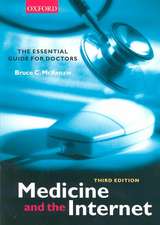Mouse as a Model Organism: From Animals to Cells
Editat de Cord Brakebusch, Taina Pihlajaniemien Limba Engleză Paperback – 16 oct 2014
| Toate formatele și edițiile | Preț | Express |
|---|---|---|
| Paperback (1) | 1087.87 lei 6-8 săpt. | |
| SPRINGER NETHERLANDS – 16 oct 2014 | 1087.87 lei 6-8 săpt. | |
| Hardback (1) | 1092.99 lei 6-8 săpt. | |
| SPRINGER NETHERLANDS – 31 mar 2011 | 1092.99 lei 6-8 săpt. |
Preț: 1087.87 lei
Preț vechi: 1145.13 lei
-5% Nou
Puncte Express: 1632
Preț estimativ în valută:
208.19€ • 226.06$ • 174.88£
208.19€ • 226.06$ • 174.88£
Carte tipărită la comandă
Livrare economică 22 aprilie-06 mai
Preluare comenzi: 021 569.72.76
Specificații
ISBN-13: 9789400796096
ISBN-10: 9400796099
Pagini: 180
Ilustrații: XIV, 165 p.
Dimensiuni: 155 x 235 x 9 mm
Greutate: 0.26 kg
Ediția:2011
Editura: SPRINGER NETHERLANDS
Colecția Springer
Locul publicării:Dordrecht, Netherlands
ISBN-10: 9400796099
Pagini: 180
Ilustrații: XIV, 165 p.
Dimensiuni: 155 x 235 x 9 mm
Greutate: 0.26 kg
Ediția:2011
Editura: SPRINGER NETHERLANDS
Colecția Springer
Locul publicării:Dordrecht, Netherlands
Public țintă
ResearchCuprins
Preface.- 1 Genomic insulators in transgenic animals, Lluís Montoliu et al.- 2 The GERMAN MOUSE CLINIC – Running an open access platform, Martin Hrabé de Angelis et al..- 3 Nature & Nurture: impacts on mouse phenotypes & translational research, Cory Brayton.- 4 X The informatics of high-throughput mouse phenotyping: EUMODIC and beyond, John M Hancock and Hilary Gates.- 5 Experimental tumour models in mice, Ritva Heljasvaara and Taina Pihlajaniemi.- 6 Exploration of MMP function in mouse models of angiogenesis, Agnès NOEL et al..- 7 Tumor- stroma interactions: focus on fibroblasts, Donald Gullberg and Rolf K. Reed.- 8 Experimental procedures to assay invasion-associated activities of primary cultured fibroblasts, Olivier De Wever et al..- 9 Systemic Instigation: A Mouse Model to Study Breast Cancer as a Systemic Disease, Sandra S. McAllister.- Index
Recenzii
“The book gives a good introduction to the possible way of exploiting the mouse system to explore the molecular pathways underlying human diseases, especially cancer. The concept of ‘mouse clinics’ and the high throughput phenotyping of mouse mutants … described in the books will be watched with bated breath by all investigators of biomedical research, as these are the signposts of things to come in future.” (N. V. Giridharan, Indian Journal of Medical Research, Vol. 136, October, 2012)
Caracteristici
High-level articles interesting for beginners and experienced scientists in mouse model research Describes state-of-the-art, chances, and current problems in mouse model research In the post-genomic era, use of in vivo models is mandatory This book gives an excellent introduction to the use of mice as a model organism














